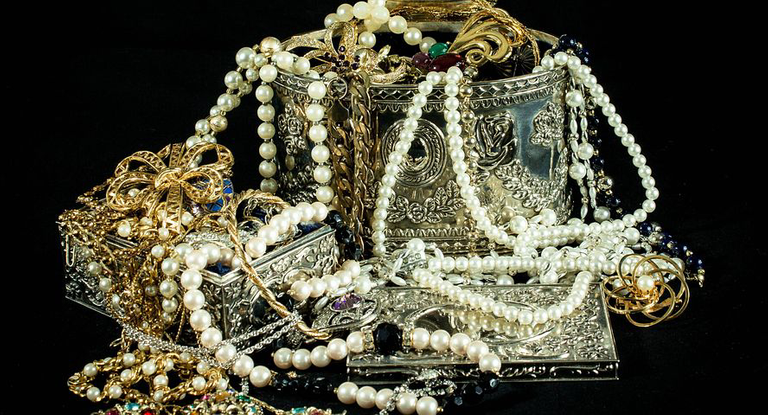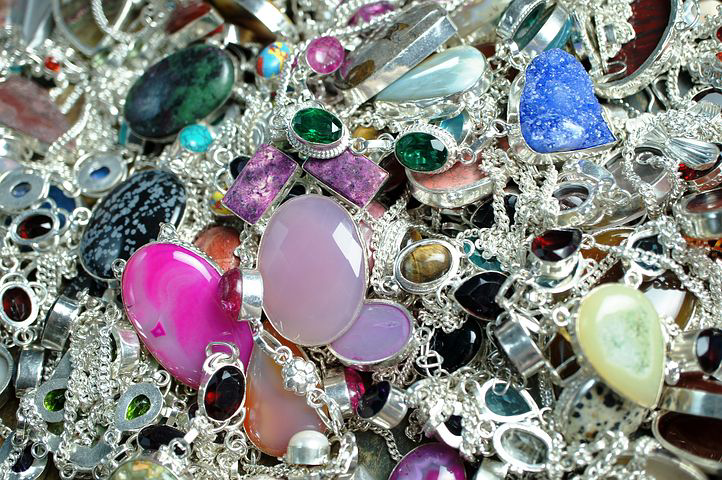Jewelry has been a part of human culture for thousands of years, and it continues to be a popular and cherished form of adornment today. From simple, elegant pieces to more elaborate and intricate designs, jewelry can be a reflection of one's personal style, a symbol of love and commitment, or a way to express cultural heritage.

One of the earliest forms of jewelry was the use of beads, which have been found in archaeological digs dating back to prehistoric times. These early beads were often made from natural materials such as shells, bone, and stone, and were used for both decorative and spiritual purposes.
As civilization progressed, so did the materials and techniques used to make jewelry. Gold and silver were among the first metals to be used, and their beauty and durability made them popular choices for both personal adornment and as a medium for currency.
The ancient Egyptians were known for their love of jewelry, and their artisans were experts in working with gold, silver, and precious stones. Egyptian jewelry was often highly symbolic, with hieroglyphs and other imagery used to convey meaning. The use of amulets and charms was also prevalent in ancient Egypt, with certain symbols believed to have protective powers.

In ancient Greece and Rome, jewelry was also a popular form of adornment, and the art of jewelry-making reached new heights. The Greeks were known for their intricate metalwork, while the Romans were renowned for their use of precious stones and pearls.
Fast forward to the present, Jewelry designs have undergone a significant transformation, with new technology and materials being introduced. Diamonds, which were once considered a rarity, are now widely available, and a range of man-made gemstones have been created, including cubic zirconia and moissanite. Additionally, new technology has made it possible to create intricate designs and patterns that would have been impossible to achieve with traditional techniques.
One recent trend in the jewelry industry is the use of sustainable and ethically-sourced materials. Many jewelers are now using recycled gold and silver, and sourcing gemstones from mines that adhere to strict environmental and social standards. Additionally, lab-grown diamonds and gemstones are becoming increasingly popular as they are seen as a more ethical and sustainable alternative to mined stones.
Gold and silver are commonly used in fine jewelry, while platinum is a more expensive option that is known for its durability and resistance to tarnishing. Titanium is a newer addition to the list of jewelry metals and is gaining popularity due to its strength, lightness, and hypoallergenic properties.

Precious Stones: Diamonds, sapphires, emeralds, and rubies are the most popular precious stones used in jewelry. They are known for their beauty and durability and are often used in engagement rings, earrings, and pendants.
Semi-Precious Stones: Amethyst, garnet, turquoise, and topaz are examples of semi-precious stones that are commonly used in jewelry. They are less expensive than precious stones but are still known for their unique colors and patterns.
Pearls: Pearls are an organic gemstone that are created inside the shells of mollusks. They come in a variety of colors and sizes and are often used in necklaces, earrings, and bracelets.
Wood: Wood has been used to make jewelry for centuries. They are known for its natural beauty and unique grain patterns.
Glass: Glass beads and pendants are used in making jewelry, they come in different colors and shapes.
Plastic: plastic is a modern material used in making jewelry, it is lightweight, comes in different colors and shapes, and is inexpensive.
Leather: leather cord and leather strips are used in making jewelry, it is also a modern material that is inexpensive and versatile.
Other materials: Other materials like ceramic, shell, and bone are also used to make jewelry.
This list is not exhaustive, and jewelry can be made from many other materials as well. The choice of material is often a personal preference, as well as influenced by factors such as cost, durability, and fashion trends.
In conclusion, jewelry has a rich history and continues to be a beloved form of adornment. From the earliest beads to the latest technology, jewelry has always been a reflection of human creativity and skill. Today, there are many different styles and materials to choose from, making it possible for everyone to find the perfect piece of jewelry to suit their personal style. Additionally, with the growing awareness of sustainability and ethical sourcing, it is possible to purchase jewelry that is not only beautiful but also responsible.
If you like the post, please don't hesitate to comment, vote and promote.

Posted Using LeoFinance Beta
I strongly believe as time goes on, the value of jewellery will still increase because I see it as a massive tool in which money is been stored within depreciating with time
You are right. I also believe that in future gold demand will further increase